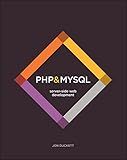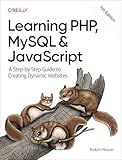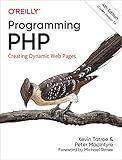Best PHP Multidimensional Array Guides to Buy in December 2025

PHP & MySQL: Server-side Web Development



Front-End Back-End Development with HTML, CSS, JavaScript, jQuery, PHP, and MySQL



Learning PHP, MySQL & JavaScript: A Step-by-Step Guide to Creating Dynamic Websites



PHP, MySQL, & JavaScript All-In-One For Dummies



Programming PHP: Creating Dynamic Web Pages



Start With AI Agents In PHP: The Market Opportunity Every PHP Developer Is Missing


In PHP, multidimensional arrays are arrays that contain other arrays as elements. They allow you to store and access data in a structured way. When using global multidimensional arrays in PHP, you need to follow a few steps:
- Declare the array: Start by declaring a global multidimensional array at the top of your script to make it accessible from anywhere in your code. You can do this using the global keyword followed by the name of the array you want to declare.
global $myArray; // Declare a global multidimensional array $myArray = array(); // Initialize the array
- Populate the array: Fill your multidimensional array with data. You can assign values to specific elements by specifying the indices of the desired sub-arrays.
$myArray[0][0] = "Element 1"; $myArray[0][1] = "Element 2"; $myArray[1][0] = "Element 3"; $myArray[1][1] = "Element 4";
- Access array elements: To access a specific element within a global multidimensional array, you simply need to provide the correct indices.
echo $myArray[0][1]; // Outputs: Element 2
- Modify array elements: You can modify the values of specific elements by assigning new values to the desired indices.
$myArray[1][0] = "New element"; echo $myArray[1][0]; // Outputs: New element
- Remove array elements: If you want to remove elements from a global multidimensional array, you can use the unset() function, specifying the correct indices.
unset($myArray[0][1]);
- Loop through the array: You can use loops, such as for or foreach, to iterate over the elements of a global multidimensional array.
foreach ($myArray as $subArray) { foreach ($subArray as $element) { echo $element . ", "; } } // Outputs: Element 1, Element 3, New element,
Global multidimensional arrays in PHP allow you to store complex data structures and manipulate them as needed. By following these steps, you can effectively work with and manipulate multidimensional arrays in your PHP code.
How do you create a copy of a multidimensional array in PHP?
To create a copy of multidimensional arrays in PHP, you can use the array_map function recursively. Here's an example:
function array_copy($arr) { return array_map(function($item) { if (is_array($item)) { return array_copy($item); } return $item; }, $arr); }
// Example multidimensional array $originalArray = array( array('one', 'two', 'three'), array('four', 'five', 'six'), array('seven', 'eight', 'nine') );
// Create a copy of the original array $copyArray = array_copy($originalArray);
// Modify the copy array $copyArray[0][0] = 'modified';
// Output the original and copy array print_r($originalArray); print_r($copyArray);
In this example, the array_copy function uses array_map to recursively iterate over each element of the array. If an element is an array, it calls the array_copy function again to create a copy of the nested array. If an element is not an array, it simply returns the value.
By using this approach, changes made to the copied array will not affect the original array, ensuring that you have a true copy.
What are some common use cases for multidimensional arrays in PHP?
Some common use cases for multidimensional arrays in PHP include:
- Storing and manipulating tabular data: Multidimensional arrays can be used to store and manipulate data in a table-like structure. Each row represents an item or record, and each column represents a specific attribute of that item. This can be useful in situations such as storing data from a database query result.
- Storing hierarchical data: Multidimensional arrays can represent hierarchical structures, such as a tree-like structure. This can be useful for representing data with parent-child relationships, like a file system or a nested menu.
- Matrix operations: Multidimensional arrays can be used to perform matrix operations, such as matrix addition, multiplication, and inversion. This is particularly useful in mathematical calculations and scientific applications.
- Storing data for charts and graphs: Multidimensional arrays can be used to store data for generating charts and graphs. Each data point can be represented as an array element, and different dimensions can represent different attributes of the data, such as time, value, and category.
- Storing data for multi-level menus: Multidimensional arrays can be used to store data for multi-level menus. Each level can be represented as a nested array, allowing for easy navigation and rendering of the menu structure.
- Storing data for games: Multidimensional arrays can be used to store data for games, such as representing a game board or a grid. Each cell of the array can represent a specific element or state of the game.
These are just a few examples, and multidimensional arrays can be used in various other scenarios depending on the specific requirements of the application.
Can you have an associative multidimensional array in PHP?
Yes, you can have an associative multidimensional array in PHP. An associative multidimensional array is an array that contains other arrays as its elements, and each array element can be accessed using a key. Here's an example:
$students = array( "tom" => array("age" => 25, "grade" => "A"), "jane" => array("age" => 24, "grade" => "B"), "john" => array("age" => 26, "grade" => "A+") );
In this example, the $students array is a multidimensional array where each element is an associative array representing a student. Each student's information can be accessed using the student's name as the key. For example:
echo $students["tom"]["age"]; // Output: 25 echo $students["jane"]["grade"]; // Output: B
Can you use multidimensional arrays with database queries in PHP?
No, multidimensional arrays cannot be directly used with database queries in PHP. Database queries in PHP typically utilize structured query language (SQL) to interact with a database management system. The result of a database query is usually returned as a result set, which is not a multidimensional array but rather a different data structure specific to the database driver or extension being used. To manipulate the data from a database query, you might need to iterate through the result set and store the data in a multidimensional array manually, if desired.
How do you check if a specific key exists in a multidimensional array?
To check if a specific key exists in a multidimensional array, you can use the isset() and array_key_exists() functions in PHP.
Here's an example using isset():
$array = [ 'first' => [ 'name' => 'John', 'age' => 25 ], 'second' => [ 'name' => 'Alice', 'age' => 30 ] ];
if (isset($array['first']['name'])) { echo "The key 'name' exists in the multidimensional array."; } else { echo "The key 'name' does not exist in the multidimensional array."; }
And here's an example using array_key_exists():
$array = [ 'first' => [ 'name' => 'John', 'age' => 25 ], 'second' => [ 'name' => 'Alice', 'age' => 30 ] ];
if (array_key_exists('name', $array['first'])) { echo "The key 'name' exists in the multidimensional array."; } else { echo "The key 'name' does not exist in the multidimensional array."; }
Both isset() and array_key_exists() return true if the key exists and false otherwise. You can use them based on your preference and specific requirements.
